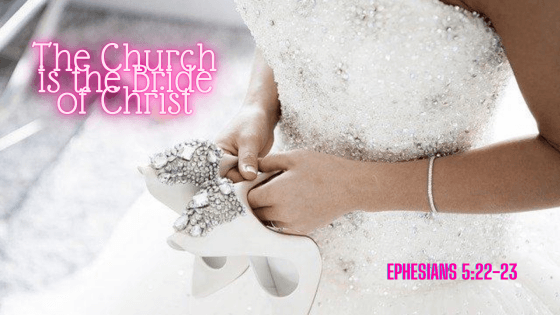John 14:1-3 is one of the three passages often quoted whenever the topic of the rapture comes into play. Jesus promises that He would go to His Father’s house to prepare a place for us, and then come back to receive us to Himself.
But no matter how wonderful this may sound, those who live in the modern western world do not completely grasp the full significance of this promise. This is because in His promise Jesus was drawing an analogy from Jewish marriage customs in biblical times.
Marriage Covenant in Ancient Israel
Following ancient Jewish wedding traditions, a marriage covenant is established as a result of the father of the bridegroom selecting a bride for his son. He would send his most trusted servant to search for a prospective bride and negotiate with the father of the young woman the purchase price (dowry or mohar in Hebrew).
Note: You may want to read Isaac and Rebekah’s love story in Genesis 24 – 27.
Once the woman accepts the proposal and both families agree to the price, the groom would travel from his father’s house to the home of his prospective bride to establish a betrothal covenant. This betrothal agreement is solemnized by three acts: a solemn oral commitment in the presence of witnesses, a pledge of money, and a written pledge or contract called a ketubah.

The betrothal covenant was thereby established and the young man and woman are regarded to be husband and wife, although she remained in her father’s house. From that moment on, the bride was declared to be consecrated or sanctified, set apart exclusively for her bridegroom.
As a symbol of the covenant relationship that had been established, the bridegroom and bride would drink from a cup of wine over which a betrothal benediction has been pronounced.
The Departure of the Groom
After the marriage covenant was sealed, the bridegroom would leave his bride and return to his father’s house to build an addition to the existing dwelling, where he would receive his wife in about twelve months.
He would say to his bride, “I have to go; I’m going to prepare the chuppah (marriage chamber), a place for you at my father’s house.” The bride would then say, “Do not go,” and the groom would respond, “It is better for you that I’ll go but I will come back.”
This period of separation afforded the bride time to focus on her personal preparations: beautification, wedding garments, but most especially her oil lamp, and to prepare for married life.
The Return of the Groom
At the end of the period of the separation, the groom would come to take his bride to live with him. The taking of the bride usually took place at night. The groom, best man, and other male escorts would leave the groom’s father’s house and conduct a torchlight procession to the home of the bride.
Although the bride knew to expect her groom after about a year, she did not know the exact day or hour. For that reason, the bride kept her oil lamps ready at all times, just in case the groom comes in the middle of the night, sounding the shofar (ram’s horn) to lead the bridal procession to the home he had prepared for her.

The Home Taking & Marriage Ceremony
In an ancient Jewish wedding, when the father of the groom saw that the time had come for his son to go and get his bride, he would tell his son, “Go, son, and get your bride and bring her home.” The anxious son would then leave his father’s house to take his bride and present her to his father.
Note: The marriage ceremony consisted mainly of the “taking” of the bride.
Shortly after arrival, the bride and groom would be escorted by other members of the wedding party to the bridal chamber. Before entering the chamber, the bride remained veiled so that no one could see her face. There in the privacy of the chuppah, the bride and groom would enter into physical union for the first time, thereby consummating the marriage that had been covenanted earlier.
After the marriage was consummated, the groom would announce the consummation to the other members of the marriage ceremony outside the chamber (John 3:29). Upon receiving this good news, the wedding guests would feast and make merry for the next seven days.
During the seven days of the wedding festivities, which were sometimes called the “seven days of the chuppah,” the bride remained hidden in the bridal chamber. After these seven days, the groom would bring his bride out of the bridal chamber, now with her veil removed, so that all could see who his bride was.
The Bride of Christ: The Church
How a wedding in ancient Israel is celebrated is a picture with spiritual parallels to the church of Jesus Christ and even to each individual believer’s relationship to Christ.
The Bridegroom is no other than Jesus Christ.
On one occasion, Jesus was questioned by the Scribes and Pharisees about fasting. They asked Him, “Why do the disciples of John fast often and make prayers, and likewise those of the Pharisees, but Yours eat and drink?” And He said to them, “Can you make the friends of the bridegroom fast while the bridegroom is with them” (Luke 5:33-34)?
John the Baptist answered the question of the Scribes and Pharisees in John 3:27-29.
In the examination of the analogy of Jesus’ promise to His disciples (and to all believers) in John 14:1-3, the first thing that should be noted is the fact that the New Testament clearly pictures the Church as the bride of Christ (Ephesians 5:22-23).

The Betrothal of Christ with the Church
Also, just as the Jewish bridegroom took the initiative in marriage by leaving his father’s house and traveling to the home of the prospective bride, so Jesus left His Father’s house in heaven and traveled to earth, the home of His prospective bride (the Church), over 2,000 years ago.
In the same manner, as the Jewish bridegroom came to the bride’s home to obtain her through the establishment of a marriage covenant, so Jesus came to earth to obtain the Church through the establishment of a covenant.
On the same night in which Jesus made His promise in John 14:1-3, He instituted communion. As He passed the cup of wine to His disciples, He said, “This cup is the new covenant in my blood (1 Corinthians 11:25).” This was His way of saying that He would establish a new covenant through the shedding of His blood on the cross.
Parallel to the custom of the Jewish groom paying a price to purchase His bride, Jesus paid a price to purchase His bride, the Church. The price that He paid was His own lifeblood (1 Peter 1:18-19 NLT; 1 Corinthians 6:19-20 NIV).
Analogous with the Jewish bride being declared to be sanctified or set apart exclusively for her groom once the marriage covenant was established, the Church has been declared to be sanctified or set apart exclusively for Christ (Ephesians 5:25-27); 1 Corinthians 1:2; 6:11; Hebrews 10:10; 13:12).
The Coming of the Lord for His Church
In the same manner, as the Jewish groom came to take his bride to live with him at the end of the separation period, so Christ will come to take His bride to live with Him at the end of His period of separation from her (John 14:3).
Analogous with the Jewish bride not knowing the exact time of the groom’s coming for her, the Church does not know the exact time of Christ’s coming for her. This is why the believers need to keep watch because no one knows the day or the hour when the Son of Man comes (Matthew 24:36).
Disclaimer: As an Amazon Associate, I may earn a commission when you use any links on this page to make a purchase, but at no additional cost to you.
In the same way that the Jewish groom’s arrival was preceded by a shout, so Christ’s arrival to take the Church will be preceded by a shout (1 Thessalonians 4:16).
Similar to the Jewish bride’s return with the groom to his father’s house after she departs from her home, the Church will return with Christ to His Father’s house in heaven after she is “caught up” from the earth to meet Him in the air (1 Thessalonians 4:17).
The Church & the Tribulation
Corresponding with the Jewish bride remaining hidden in the bridal chamber for a period of seven days after arrival at the groom’s father, the Church will remain hidden for a period of seven years after arrival at Christ’s Father’s house in heaven.
While the seven-year Tribulation period is taking place on the earth, the Church will be in heaven totally hidden from the sight of those living on the earth.
Just as the Jewish groom brought his bride out of the bridal chamber at the conclusion of the seven days with her veil removed, so that all could see who his bride was, so Christ will bring His Church out of heaven in His Second Coming at the conclusion of the seven-year Tribulation period in full view of all who are alive, so that all can see who the true Church is (Colossians 3:4).
Conclusion
Someday at the appointed time, the Father in heaven will tell His Son, “Go, Son, and get Your bride and bring her home!” Christ will come to take His bride, and she will be presented to His Father as a glorious, unblemished bride. At this point, the Father will have fulfilled His legal contract when He betrothed us to Christ.
We are still waiting for this presentation phase of the marriage. We are waiting for our Bridegroom to come to take us to Himself. We are waiting to hear the midnight cry, “Behold, here comes the Bridegroom! Come out to meet him” (Matthew 25:6).
Are you ready for the coming of our Bridegroom, to receive us to Himself?


Can I receive more content about Jesus the Bride groom and the Church wedding and consummation?
Also, I am requesting prayer.
Please pray ? for urgent divine intervention of Jesus Christ to save my life from a horrible dark situation. Which evil persons plan on taking my life. I suffer the same situation as David in the book of Psalms suffered at the hands of King Saul and his people.
Please pray ? for Jesus to please have mercy and grace upon me. By saving my life, and delivering me out of the hands of All enemies preparing to kill and destroy me.
Fear is of the Devil. But I am terrified. I don’t want to be destroyed. I’m innocent. I have never wronged anyone to lose my life for nothing.
Please pray ? for Jesus to please do something to help me get to a safe haven, and for Him to fight for my life, protect me, send as many angels to defend me against those coming after me to take me away to destroy me.
Please ? for a divine miracle. I’m heartbroken ? that no one even fought for my life, nor helped me. I’m so annoyed and angry. Please pray for Jesus to help me forgive these people, and to fill me with peace, courage and strength.
I also need healing of my body. Please pray ? for my health. I don’t have much time. These enemies are coming after me.
Also, please send the content of Jesus the bridegroom and the Church wedding, consummation and marriage super.
Hi Nickeisha,
I’m sorry to hear of your situation. Keep trusting God and always ask for His guidance and covering. As we read in God’s Word, “He that is in us is greater than he that is in the world.”
You’re in my prayers, God bless! ?